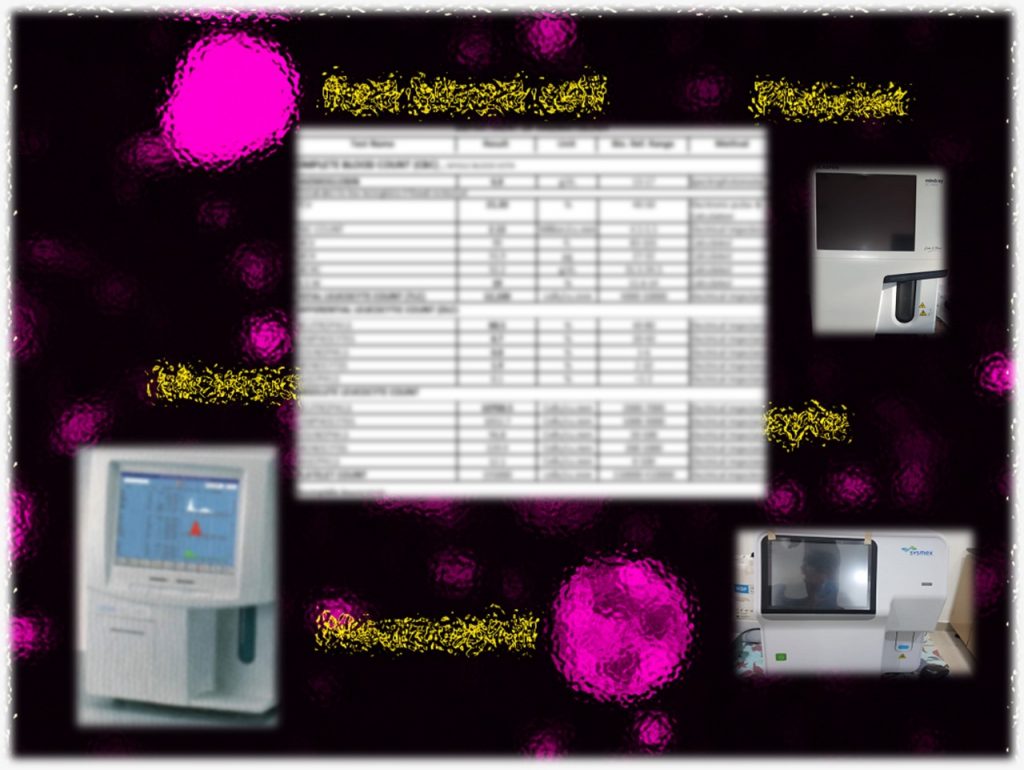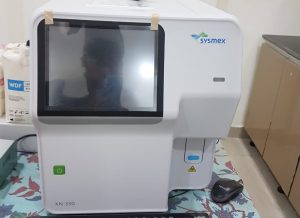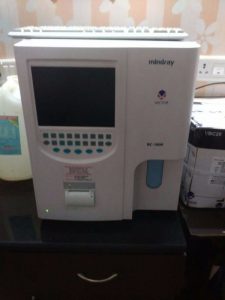
The following features or specifications may be of importance, when purchasing a hematology analyser or cell counter:
Parameters reported
Cell counters may report on ranging from the classic 8 parameters to 36 parameters and 2-6 histograms and scatter diagrams. The decision on number of parameters required generally depends on the type of test needed. This in turn depends on case mix and load. Look at the size, type of facility and testing capability needs – Is your facility a large multi-specialty hospital with an active inpatient population, mix of all types of cases and high throughput requirement? If yes, you probably need a fully automatic 5-part differential (Or even 6-part) hematology analyser.
A back-up semi-automatic 3-part differential cell counter may also be required, if there is frequent need for stat testing. Small and medium secondary care hospitals can opt for 3-part differential cell counters. They are mostly less automated, have less throughput and limited test menus, but would suffice for their requirements. Less frequent, specialized test requirements can be out-sourced.
Hematology Analyser throughput
Cell Counters come with throughput ranging from 40 to 200 samples per hour. One may decide based on hospital throughput requirements.
Sample volume and Mode
Generally hematology analysers support the following 3 modes: Pre-diluted mode, Whole blood mode, Capillary whole blood mode, for various test requirements. Capability to work with smaller volumes is useful, especially for pediatric tests. There are some cell counters supporting as low as 9µl samples also.
Data storage in hematology analysers
Cell counters offer storage capacity starting from 35000 to 100,000 results including histograms and scatter diagrams etc. E.g. Sysmex XP-100 provides results up to 20 parameters (both in WB and PD mode), has throughput of 60 samples per hour and storage capacity of 35000 results along with 3 histograms. Mindray BC -3000 Plus also provides similar storage and sample processing capacity with 19 parameters.

Dimension & weight of hematology analyser
If you are concerned about the space you have for the Laboratory, then the compactness of the system may be important to you.
Efficiency & Cost
Check the number and quantity of reagents that need to be used as well as their shelf-life. Ask for per test cost that you may incur based on the present and future volumes of samples.
Touchscreen & LCD display
Modern hematology analysers come with extensive touchscreen and large, convenient LCD displays for all operations, including inventory management system, thereby eliminating the need for a separate computer system. On the flipside, if staff is not properly trained and careful in using touchpads, one may require touchscreen replacement or unnecessary frustrations with faulty touchpad/keys, even though the analyser functions are all intact.
Closed tube sampling or Open tube sampling?
A critical factor for any type of hematology analyser instrument that analyses potentially infectious body fluids is automation that eliminates or minimizes contact between the user and the specimen so as to ensure user safety. In this regard closed tube sampling is considered safer than open tube sampling devices. Also check how the device deals with waste management.
Maintenance support of hematology analyser
In case of fault or failure, quick and efficient service by the seller is critical because the blood samples deteriorate quickly. This is the reason most labs opt for reagents based rental systems, rather than outright purchase. In case of rentals, it is up to the seller to repair or replace the system within the promised SLA. However, a rental model works only for regular and higher volumes. If volumes are smaller than planned it may turn out to be costlier per test.
Trained staff
Carefully assess the staff’s capacity or training to use the new system. Some specific blood analysis testing may be high in complexity and may require extensive training for procedures requiring a high degree of operator preparation, calibration, intervention, and analysis.
Digital connectivity
Another important factor to consider when purchasing a hematology analyser is the system’s digital/computer interface capabilities. No. of ports available, printer systems, LAN/wireless connectivity, HL7 compliance, barcode scanner interface are all important. Seamless integration with Hospital information system, Lab information management systems and/or electronic medical records may be required based on the systems the hospital already has.
Budget for Lab equipment
Last but not the least – techno-commercial evaluation needs to be done based on the budget of the hospital. To know more about planning for a lab equipment and cost of lab equipment read our blog – Medical Dianostic Centre Equipment List.
PrimedeQ is an eMarketplace for medical equipment. We offer all types of Diagnostic Lab and imaging equipment including used / refurbished (Such as Sysmex, Mindray etc.) We also assist in medical equipment repair & maintenance services at www.Primedeq.com. Contact us at +918971223957 or +917019759765 for all your medical equipment related needs.
